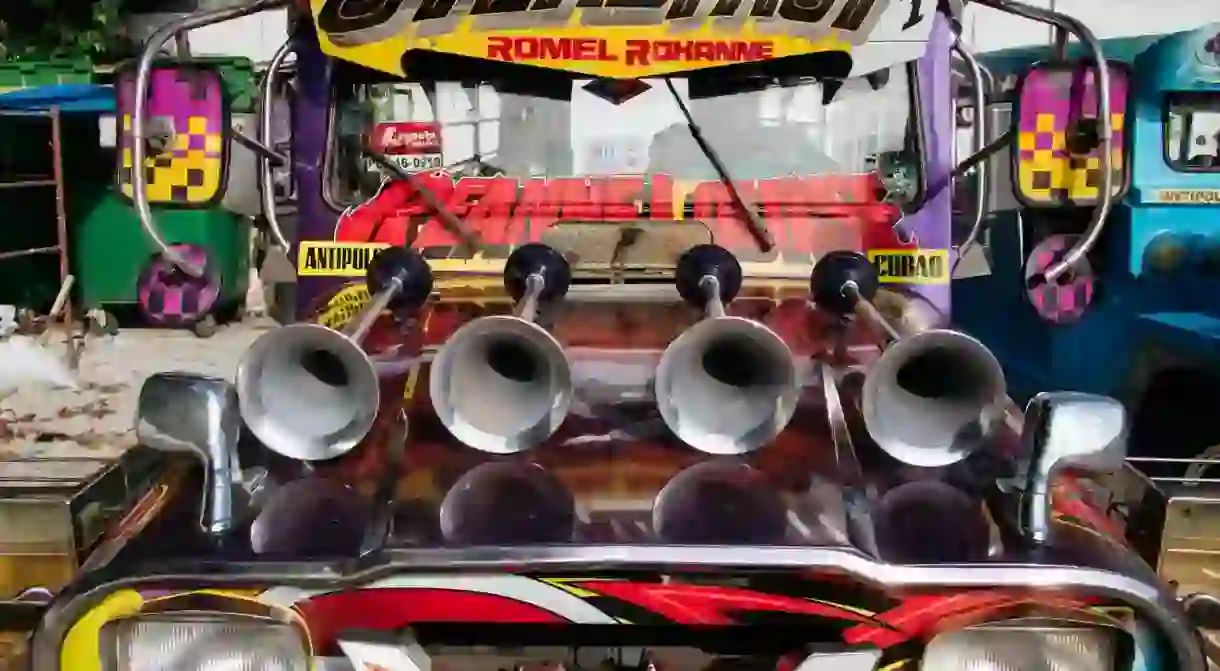RIP: An Ode to the Philippine Jeepney

Soon, Filipinos will have to say goodbye to the traditional jeepney that always came by. With the Philippine modernization program coming into effect starting this month, this once iconic means of transportation, tagged as the “King of the Road,” will be replaced by modern, eco-friendly public utility vehicles.

The Philippine Jeepneys we know today
The Philippine jeepneys have been on the road for decades. The concept behind them evolved from the US military jeeps that were left behind by the American forces during the second World War. Because of the Filipinos’ creativity, the citizens modified these public transport vehicles into vibrantly-painted and lavishly-embellished jeepneys.
It is normal for these jeepneys to be doused in several vibrant colors, including paintings of favorite animated characters or religious images. Some even place boards inside the vehicles, where words of wisdom, quotes, or famous punch lines are written, such as basta driver, sweet lover, which simply states that any driver is assumed to always be romantic. Of course, there are also jeepneys that parade through the streets and blast their loud radios and speakers with either humorous dance music or heart-breaking Filipino songs that drivers sing along to. But with the Philippine modernization program being implemented this year, at least 15-year-old jeepneys will have to bid farewell to the streets.

What happens now?
Through the Philippine modernization program, the country’s Department of Transportation (DOT) will remove old, “problematic” jeepneys and replace them with electric-powered or Euro 4-compliant vehicles (the old ones were only powered by Euro 2 engines). The new transport vehicles are said to have a set of “emission standards,” which make them environmentally-friendly. They’re also considering adding a GPS navigation system, dash cameras, and Wi-Fi internet on board to name a few features, definitely an upgrade from the traditional jeepneys.
While transport groups initially protested and voiced their opposition to this program, they now have to comply with the rules and requirements. Transportation Secretary Arthur Tugade guaranteed that the jeepney replacement will be more profitable to the business. In addition, he mentioned that they’ll provide financial assistance, such as loans and borrower programs, to drivers who will be affected.


More than just a vehicle — it’s a national cultural symbol
Jeepneys in the Philippines are more than just a means of cheap and accessible public transport. Through the years, they have survived and witnessed the everyday struggles of Filipino people. Jeepneys have become a cultural symbol, a proud Filipino creation that reflects the resilience, creativity and optimism of Filipinos. You can’t find many jeepneys outside the Philippines.
While Filipino commuters, drivers, and transport groups can’t stop the modernization program, they can look back and be thankful that at some point in Philippine history, they witnessed these unique, attention-grabbing public utility vehicles with loud horns and roaring engines. The transition period will take three years, so Filipinos have enough time to savor the moment, riding on traditional jeepneys and appreciating the “Kings of the Road” before they’re gone.















